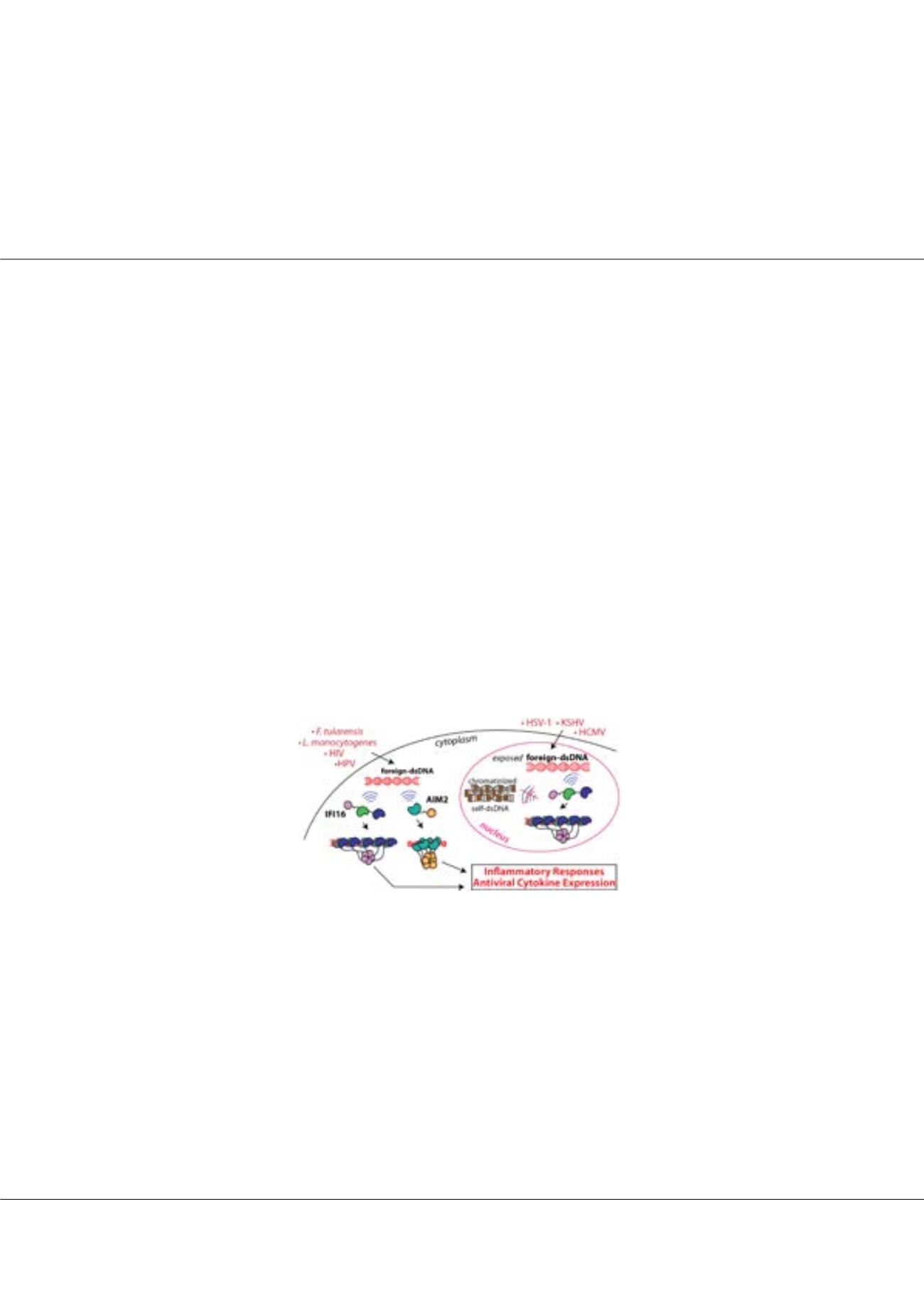

Page 131
Notes:
conferenceseries
.com
Volume 10, Issue 8 (Suppl)
J Proteomics Bioinform, an open access journal
ISSN: 0974-276X
Structural Biology 2017
September 18-20, 2017
9
th
International Conference on
Structural Biology
September 18-20, 2017 Zurich, Switzerland
Jungsan Sohn, J Proteomics Bioinform 2017, 10:8(Suppl)
DOI: 10.4172/0974-276X-C1-0100
Assembly mechanism of foreign dsDNA-sensing inflammasomes
Jungsan Sohn
Johns Hopkins University, USA
A
bsent-in-melanoma-2-like receptors (ALRs) detect foreign double-stranded (ds)DNA from invading pathogens and
assemble into filamentous signaling platforms termed inflammasome. The ALR filaments play crucial roles in launching
antiviral and inflammatory responses against many pathogens (e.g. HIV and HSV); however, persistent ALR complexes
are also linked to autoimmune disorders (e.g. Sjogren’s syndrome and lupus). Here, by combining solution assays, electron
microscopy, and single-molecule methods, we investigate the filament assembly mechanisms of two prototypical ALRs, namely
Interferon Gamma Inducible Protein 16 (IFI16) and (absent in melanoma 2) AIM2. (1) IFI16 detects foreign dsDNA both in
the host nucleus and cytoplasm. We found that IFI16 uses dsDNA as a one-dimensional diffusion-scaffold to assemble into
filaments. The dsDNA-binding HIN200 domains of IFI16 are responsible for tracking dsDNA, while its pyrin domain (PYD)
is necessary for filament assembly. Importantly, nucleosomes represent barriers that prevent IFI16 from targeting host dsDNA
by directly interfering with its assembly. This unique scanning-assisted assembly mechanism would allow IFI16 to distinguish
self- from non-self-dsDNA in the nucleus. (2) AIM2 detects cytoplasmic dsDNA and assembles into an inflammasome. We
found that the PYD of AIM2 (AIM2 PYD) drives both filament formation and dsDNA binding. As with IFI16, the size of
exposed dsDNA acts a key regulator for the polymerization of AIM2. The helical symmetry of the upstream AIM2
PYD
filament
is consistent with the filament assembled by the PYD of the downstream ASC adaptor, indicating that AIM2 acts as a structural
template for polymerizing ASC. Together, our studies provide a unifying paradigm for how ALRs carry out foreign dsDNA-
sensing pathways, where generating a structural template by coupling ligand-binding and oligomerization plays a key signal
transduction mechanism.
Biography
Jungsan Sohn has his research focused on understanding the molecular mechanism by which human immune system engages invading pathogens. He received
BS from University of Michigan, and PhD from Duke University. Upon completing his Post-doctoral training at MIT with Dr. Bob Sauer, he joined the faculty at Johns
Hopkins in 2011.
jsohn@jhmi.edu

















